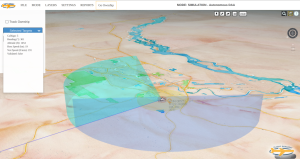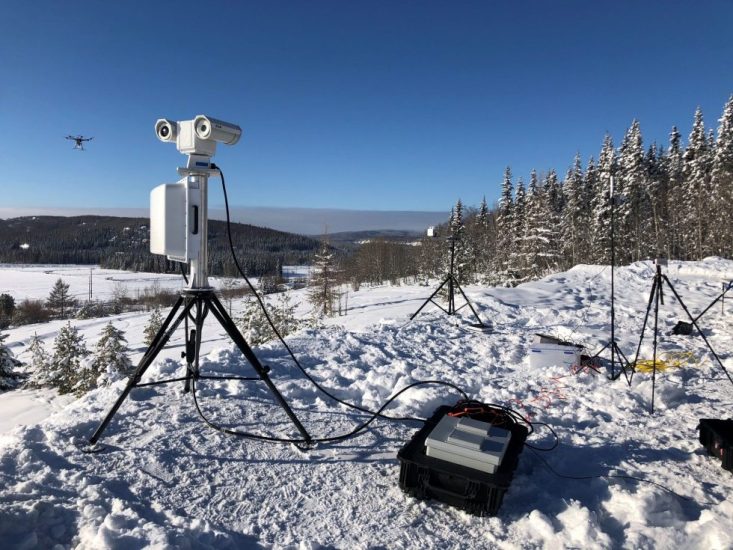Vigilant Aerospace Systems, a provider of multi-sensor detect-and-avoid safety systems for uncrewed aircraft systems (UAS) and advanced air mobility (AAM), announced that it has been awarded a contract by the US Air Force to develop a detect-and-avoid system for the Air Force’s new long-endurance drone.
According to the published project description, the objective of the project is to “integrate a mature detect and avoid capability on an existing long-endurance, Group V UAS platform for increased aircraft and pilot-in-the-loop operational awareness that leverages new and evolving C-SWaP sensors and sensor fusion software.”
The project is sponsored by the Air Force Research Lab (AFRL) and is an SBIR Phase II project through the SBIR program. The program seeks to bring dual-use technologies, which can help both civilian and military users, into the military, with a focus on high-impact, near-term implementations.

Onboard radar modeling with automatic DAA in simulation mode inside FlightHorizon
FlightHorizon is detect-and-avoid and airspace management software that fuses data from aircraft transponders, radar, drone autopilots and live FAA data to create a single picture of the airspace around a drone. The software displays air traffic, predicts trajectories and provides avoidance commands to the remote pilot or to an autopilot. The system can be used on the ground or onboard the UAS and can be configured for any size of aircraft.
The software is based on two licensed NASA patents and the company has completed contracts with NASA, the FAA and a project with the USAF’s 49th Operating Group’s MQ-9 Reaper fleet to track training flights. It is designed to meet industry technical standards and to help UAS operators to fly beyond visual line-of-sight (BVLOS).
According to Vigilant Aerospace, the new Air Force project leverages important prior research and development by the company in solving the automatic self-separation and collision avoidance problem for drones.
“We are especially excited about the intersection of this new project with our existing work for advanced air mobility companies developing safety systems for air taxis and larger cargo drones. All of these operations have similar needs for safety and integration and they are turning to Vigilant for solutions. We are able to bring existing technology, experience, patents, algorithms and flight tests to bear on solving the problems that they have in common, ” said Kraettli L. Epperson, CEO of Vigilant Aerospace.
To evaluate sensors and algorithms and to establish standards-compliance and risk ratios for industry clients, the company has completed hundreds of hours of flight tests with the system and hundreds of thousands of simulated aircraft encounters inside the software’s built-in simulation engine.
“Standards-compliant detect and avoid is a complex threshold problem for the entire industry. Provision of automatic collision avoidance for a new generation of uncrewed aircraft systems is a critical technical gap that we are striving to fill. With both onboard and ground-based versions of our software, we can utilize new or existing infrastructure and UTM networks and provide multi-layered safety. We believe we have the industry’s most comprehensive approach to UAS safety and are grateful that the Air Force has engaged our expertise and technology for their next-generation aircraft,” said Epperson.
According to the solicitation, the ultimate goal of the project is to “Integrate mature detect and avoid capability on an existing long-endurance, Group V UAS platform, and demonstrate the utility in several Air Force need areas for missions that are at different stages of conceptual maturity, including where conceptual development has not yet begun. Provide intermediate products to be assessed by planning teams, summarizing information that captures sensitivity of mission-level outcomes, including schedule, cost and risk, to key architecture and implementation decisions. Carry at least one flight test assessment of complete system integrated on UAS against manned aircraft intruder.”
(Image: Vigilant Aerospace testing multiple sensors with FlightHorizon in the field with aircraft)
For more information visit:




